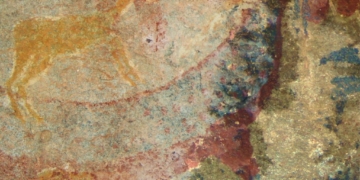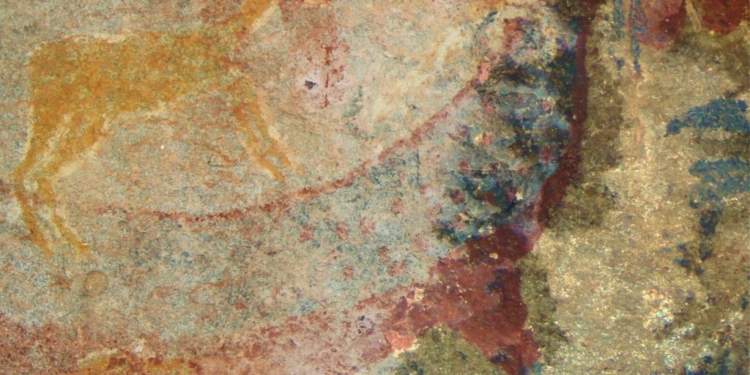
A mysterious tusked animal depicted in South African rock art may have been inspired by a long-extinct creature preserved as fossils in the region.
The Horned Serpent panel is a section of rock wall featuring artwork of animals and other cultural elements associated with the local San people, originally painted between 1821 and 1835.
Among the painted figures is a long-bodied animal with downward-turned tusks which doesn’t match any known modern species in the region.
As the San people are known to have included various aspects of their surroundings into art, including fossils, researchers suggests the tusked creature might have been inspired by a species extinct for millions of years.
The Karoo Basin of South Africa is known for abundant well-preserved fossils, including tusked animals called dicynodonts, which are often found eroding out of the ground.

Study author Dr. Julien Benoit, of the University of the Witwatersrand in South Africa, re-examined the Horned Serpent panel for a new study published in the journal PLOS One.
Dr. Benoit found the tusked figure comparable with dicynodont fossils, an interpretation that is also supported by San myths of large animals that once roamed the region but are now extinct.
He says that if the tusked figure is in fact an artistic interpretation of a dicynodont, a species which went extinct before dinosaurs appeared and were long extinct when humans appeared in Africa, it would predate the first scientific description of those ancient animals by at least a decade.
Dr. Benoit said: “The painting was made in 1835 at the latest, which means this dicynodont was depicted at least 10 years before the western scientific discovery and naming of the first dicynodont by Richard Owen in 1845.”
He says there is archaeological evidence that the San people might have collected fossils and incorporated them into their artwork, but the extent of Indigenous knowledge of paleontology is poorly understood across Africa.
Dr. Benoit added: “This work supports that the first inhabitants of southern Africa, the San hunter-gatherers, discovered fossils, interpreted them and integrated them in their rock art and belief system.”
He says further research into indigenous cultures might shed more light on how humans around the world have incorporated fossils into their culture.
Produced in association with SWNS Talker


























 Continue with Google
Continue with Google